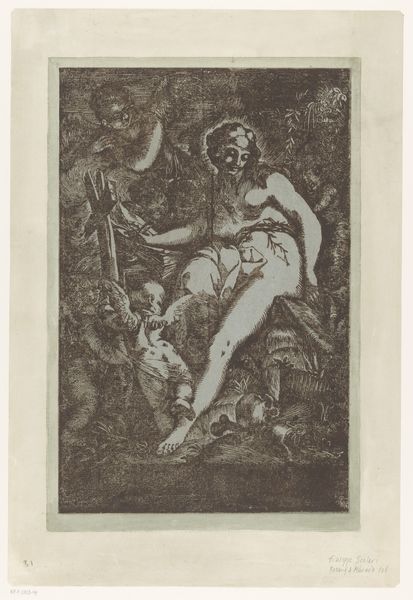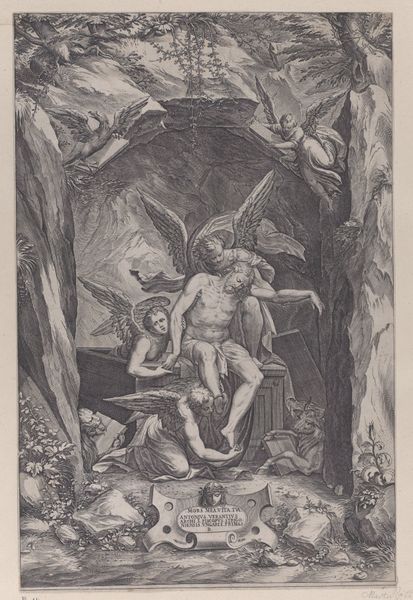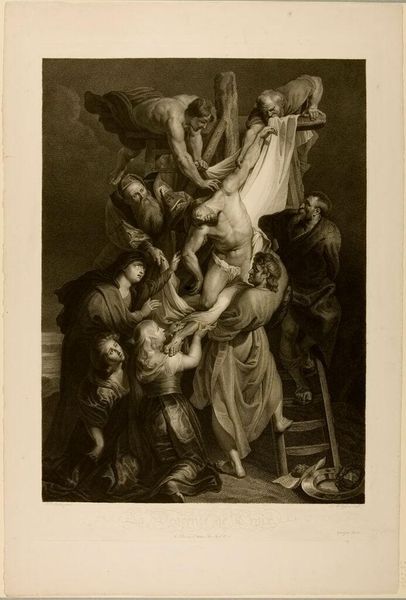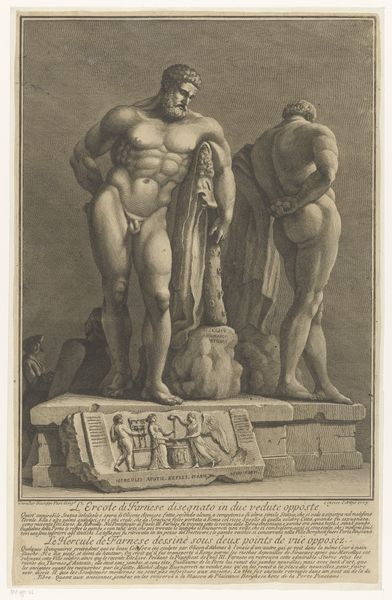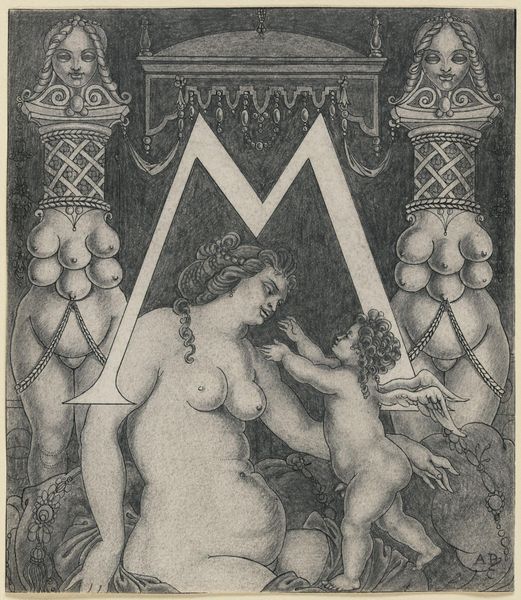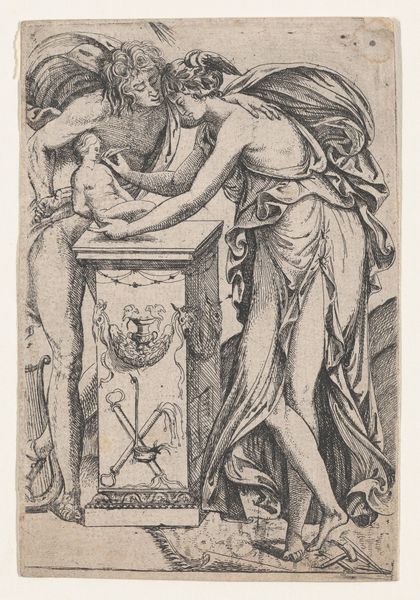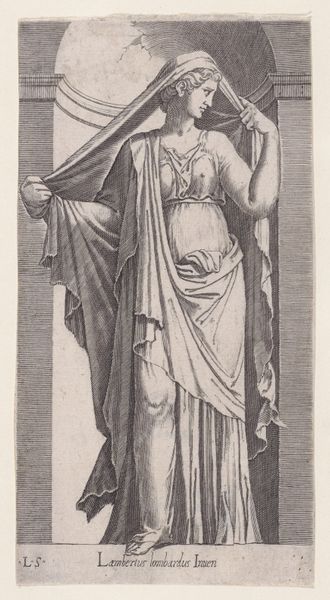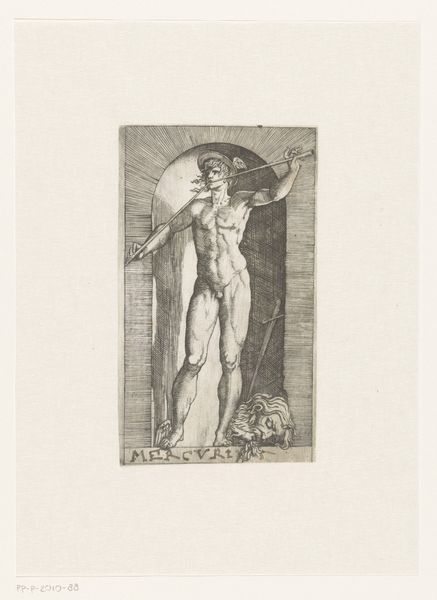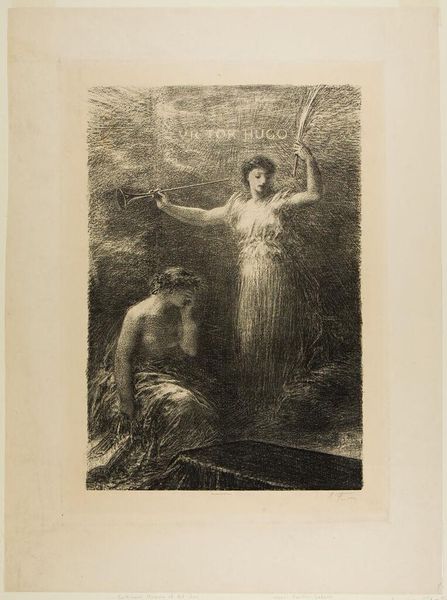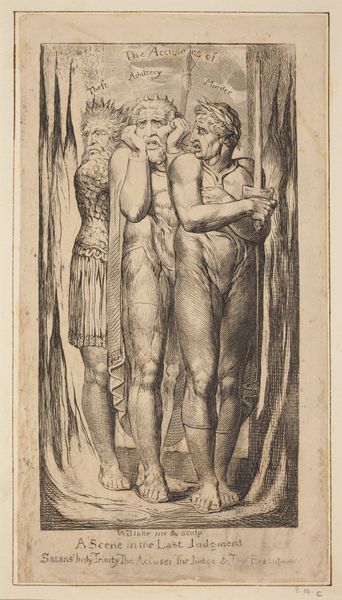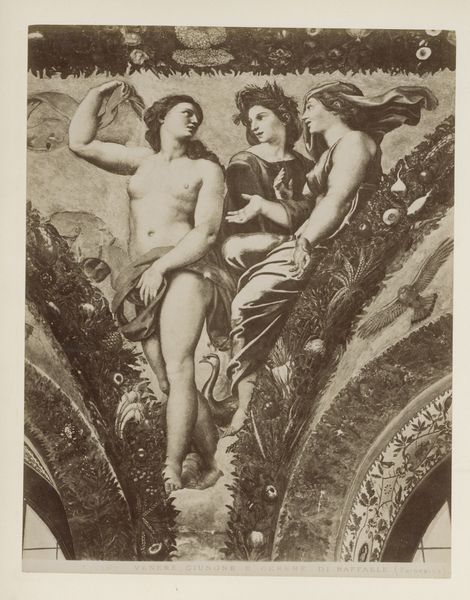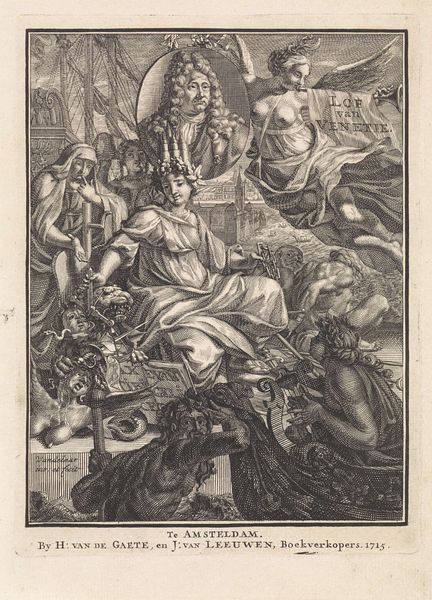
Dimensions: 239 × 172 mm (image); 272 × 195 mm (primary support); 432 × 297 mm (secondary support)
Copyright: Public Domain
Editor: So, this is Charles Rambert’s "Plate Seven from Misery," a lithograph from 1851. The overall feeling is very…heavy. There’s an angel figure cradling someone, while another person looks on with this intense despair. What do you see in this piece, especially looking at its time? Curator: I see layers of cultural anxiety and hope, powerfully expressed through enduring symbols. Consider the angel, a figure deeply rooted in Western religious tradition. She's not just a benevolent being; she’s a visual embodiment of faith, actively intervening to prevent self-destruction. Notice her tender yet firm grasp, juxtaposed with the sharp tools beside the figure on the right. These are potent symbols! Editor: The figure on the right looks like a physical manifestation of misery. Curator: Exactly. Look at the visual language of Romanticism - a dramatic narrative meant to elicit an emotional response, but here Rambert is dealing with very modern themes of urban poverty and despair. The work prompts reflection on the choices individuals make when overwhelmed by suffering, doesn't it? Do you see the subtle cross at the top center, juxtaposed with that desolate scene below? Editor: I do. It is subtle. So the lithograph uses religious imagery, the angel, and the cross as symbols of hope against this grim reality? Curator: Precisely. It's an appeal to enduring values, a suggestion that even in the darkest times, faith and compassion offer a path away from ultimate despair. The work functions almost as a cultural mirror, reflecting anxieties about morality, faith, and the human condition. Editor: That’s fascinating, I see how these visual symbols contribute to the overall cultural narrative about poverty and suicide in that time period. Thanks for illuminating that. Curator: My pleasure. It is important to examine images not only for what they are but what messages they carry, and for how long.
Comments
No comments
Be the first to comment and join the conversation on the ultimate creative platform.
